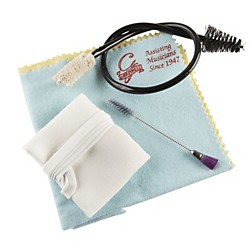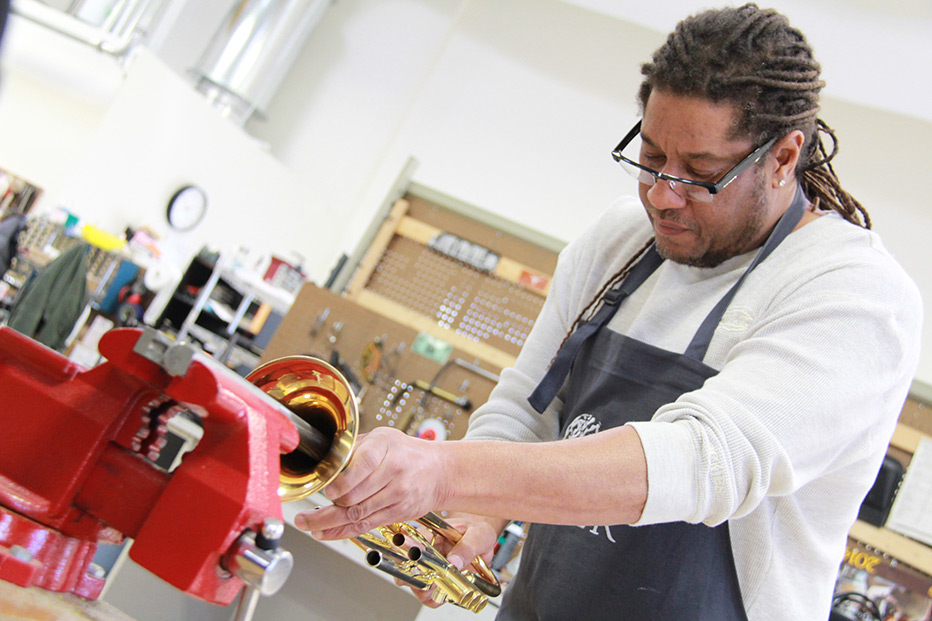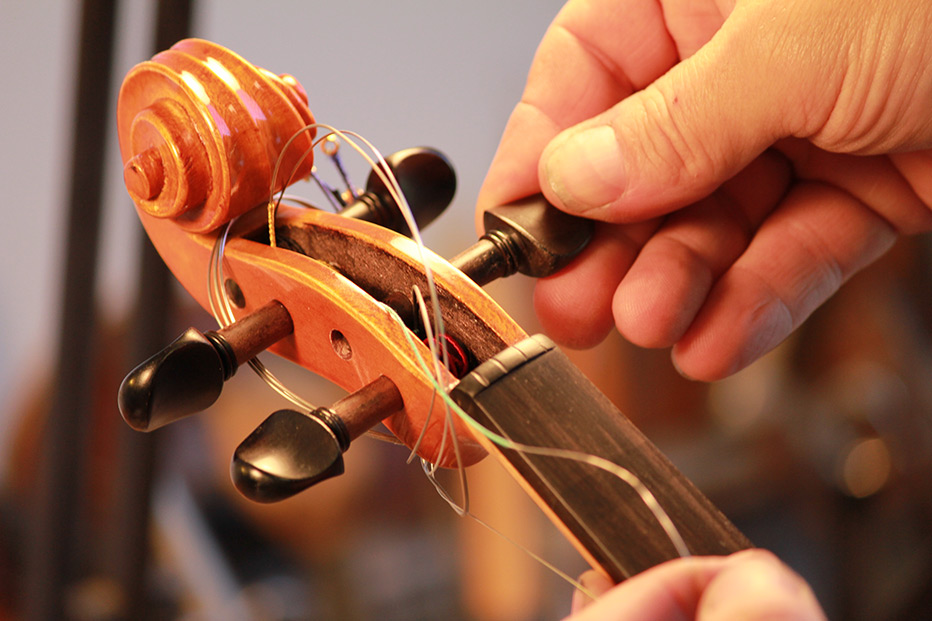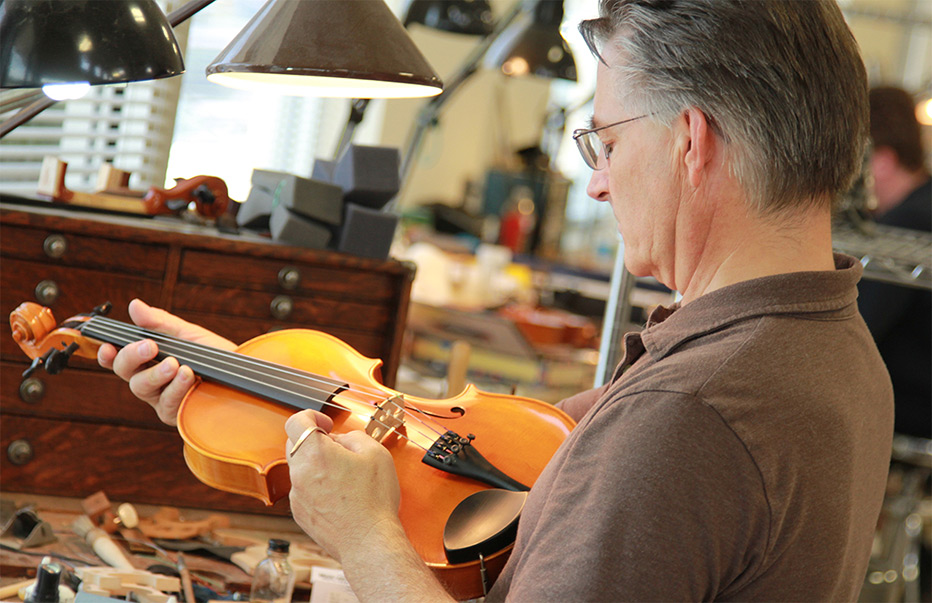April 09, 2015
Proper Care & Maintenance of a Flute


The way you treat and care for your flute directly affects the quality of sound and longevity of the instrument, which is why knowing how to clean a flute is so important.
Having an instrument that’s in good working order is essential for your child’s musical progress and success, and the flute is no different. Even if you’re purchasing a brand new flute, it’s incorrect to assume that’ll it’ll remain in working order for weeks or even months without frequent care or maintenance.
From understanding how to clean a flute to knowing how to protect it from harm, keep the following care and maintenance tips in mind from the very first day you remove your flute from its packaging.
Remove Jewelry
Jewelry- particularly rings – is a very common cause of damage to flutes. In some cases, the damage is unable to be repaired, especially if the surfaces in and around the embouchure hole are scratched or damaged. Zippers and buttons can also cause damage. To prevent damage from jewelry and clothing, remove any jewelry, jackets, or cardigans before playing the flute. If a friend or family member is handling your flute, encourage them to remove any jewelry and handle the instrument with care. In many cases, a person unfamiliar with how to handle a flute may accidentally damage or break the instrument. Pay attention to where your flute is at all times, and practice caution when letting others handle your flute.
Know How to Assemble a Flute
This may sound like a silly point to make, but you’d be surprised at how many self-proclaimed flutists don’t know how to properly assemble and disassemble their flutes. Any flute can be out of commission in a matter of seconds if the keys get bent or are forced out of alignment. On top of that, many flute warranties don’t cover bent or damaged keys. The main point of proper assembly is to not touch the keys; therefore, if you don’t touch the keys you won’t be able to damage them. To ensure your child knows how to properly assemble and disassemble their flute, make an appointment to sit down with your child’s music teacher and he or she should be able to observe your child’s actions and make recommendations.
How to Clean a Flute
When it comes to knowing how to clean a flute, there are a few things to keep in mind, including:
- Keeping it clean
- Keep it dry
- Invest in a good care kit
To keep your flute as clean as possible, wipe it down after each use. Use a soft cloth to wipe the inside and outside of the flute, and wrap the cloth around the cleaning rod found in your case so that none of the rod is exposed. This is especially important if the cleaning rod is metal, as exposing metal to metal is essentially asking for scratches and damage. Use the rod to dry out the condensation in the rod. Since the flute is played with your mouth, this step of the cleaning process is often referred to as “drying”. By swabbing the inside of your flute and cleaning the outside of it after each use, you’ll be extending the life of your flute’s pads and reducing the long-term maintenance of the instrument. There are a variety of care kits available on the market- these contain everything you’ll need to care for and clean your instrument.


Headjoint and Tenon Care
The headjoint of your flute shouldn’t be too loose or too tight. If you notice it’s tighter or looser than it should be, have it properly fitted with a qualified repair technician as soon as possible. Gently wipe down the tenon after each use with a soft cloth and don’t use products that contain petroleum jelly or cork grease to lubricate the area as this can contribute to the buildup of grease in your instrument. The only product recommended for use when the tenon is too tight is paraffin wax. Any rattles or leaks should be dealt with by an expert flute repairer, as the process is complicated and many amateur flutists can break or damage their instrument if they attempt to fix this issue on their own.
Properly Store Your Flute
Keeping the flute in its case when not in use is another good preventative measure. Laying the flute on a soft surface, such as a bed or couch, is practically inviting someone to sit down on it, and leaving it in an unsafe area of your home can lead to costly repairs. While in the case, your child’s flute won’t be exposed to changes in moisture that can ruin the pads and it’ll be protected from other accidents. Exercise caution when laying your instrument down and make sure to lay it where the least amount of keys are touching the surface of the table or chair. If you have a flute stand, use it. When searching for a flute case, find one that’s as sturdy as possible. The stronger your child’s flute case is, the less likely they are to accidentally damage their instrument.


Don’t Forget the Professionals
Your flute should be cleaned, oiled, and adjusted at least once a year by a qualified flute repair technician. Typically referred to as a COA appointment, regular annual maintenance by a professional is essential to the proper care and maintenance of your flute. Flutists who play a few hours each day or have higher than average acid levels in their skin may benefit from more frequent service. Regular maintenance will not only keep your child’s flute in tip-top shape, but it can also prevent minor issues from becoming more expensive ones. While most household insurance policies cover flutes, you may wish to purchase a standalone insurance policy, especially if your child frequently removes the flute from your home.
Want more info about the flute? Check out this video







